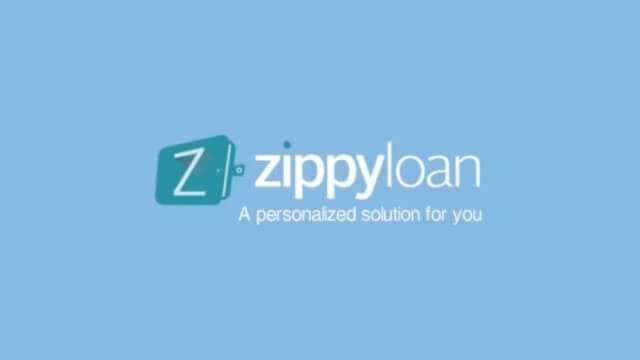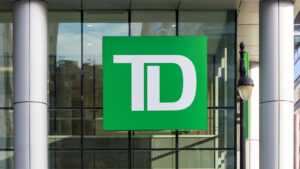What Is An Interest Bearing Loan And How To Pay Off An Interest Bearing Loan?
What is an interest bearing loan? An interest-bearing loan is a loan where the debt is expressed as principal and interest are calculated, computed, and charged from time to time on outstanding unpaid principal balances. An interest-bearing loan is a loan on which interest is charged on the principal amount borrowed.
The cost of having interest bearing loan tends to be higher when you’re young and can decrease with age if you build a good credit history. Debt arises when you borrow money from a lender, who adds interest to the unpaid balance until you repay the loan. The interest rate applied can add significant costs to a loan.
Tips
An interest bearing loan is debt on which interest must be paid. Examples are bank loans and student loans.
What Is An Interest Bearing Loan for Student Loans?
For many young people, the first exposure to interest-bearing loan can come when they take out student loans to pay for their studies. For example, the Federal Direct Subsidized Loan Program for Undergraduate Students applied a 5.05% interest rate to the money lent to students in the year 2018/19. The fee will be applied to the loan amount as long as it is paid as agreed and not in default.
How To Determine The Interest On Interest Bearing Loan?
The interest on a federally subsidized loan is applied using the daily simple interest formula. The outstanding loan balance is multiplied by the number of days since the last payment was processed and multiplied again by the interest factor. The interesting factor is determined by dividing the interest rate by the number of days in a year.
For example, imagine a loan interest rate of 3.86%. The daily rate would be 3.86 percent divided by 365. For example, if 30 days have passed since the last payment and the loan amount is $10,000, the formula would be 30 x $10,000, which equals $30,000. The $30,000 is then multiplied by an interest factor of 0.001057.
Calculation of monthly payments
A student can make up to 120 monthly payments to pay off the loan. The monthly payment amounts are determined by combining the interest rate charged for each month with the percentage of the outstanding balance that will be paid. The total interest charged on a $10,000 loan at 3.86% for 10 years is $3,860. The first monthly payment would be $100.58. The principal loan portion would be $68.41 and the interest portion would be $32.17. The interest charged will decrease slightly each month as the principal outstanding is paid until the full balance is paid.
Why charge interest?
Interest bearing loans are made by lenders to monetize the money they lend to individuals and businesses. The cost of borrowing allows lenders to stay in business, pay their bills and employees, and make a profit. Auto loans, mortgages, and credit cards are common loan products that charge interest on borrowed money.
How Does An Interest Bearing Loan Work?
How does an interest bearing loan work? When you borrow money from a credit union, bank, or another lender, you pay for the privilege in the form of interest. Think of it as a “convenience fee”. Each month you pay back part of the money borrowed plus an additional amount in the form of interest. This interest is calculated as a percentage of the loan balance and paid periodically to the lender. It is usually listed as an annual fee but can be calculated for any period.
Two common types of debt that typically include interest are installment debt and revolving debt.
Installment Loan
Installment debt includes car loans, home loans, or student loans. Installment loans are repaid over some time and have a fixed monthly repayment schedule.
When you use an installment loan, the interest charges are part of the monthly payment. Each month, a portion of your payment goes toward reducing your debt, while another portion goes toward interest charges. At the beginning of your loan, a larger portion of your monthly payment goes toward interest, even if the total amount you pay each month remains the same. As the debt goes down, so does the interest you owe — and more money goes toward paying off the principal debt.
Revolving Loan
With revolving debt, you can borrow money every month and pay it off periodically. Credit cards are the most common form of revolving debt. If you use a credit card, you can continue to spend money as long as you make monthly payments and stay under your credit limit. Credit card interest is calculated daily. As your balance increases, so do your interest payments.
How To Pay Off An Interest Bearing Loan?
Before we talk about how to pay off an interest bearing loan, is there any good reason to pay off loan early? Good reasons to pay off debt early include paying less interest and having that money to save for future financial goals and investments. But make sure you have enough in your emergency fund before making any rushed payments. In some cases, the interest on a loan can be so low that it makes no sense to accelerate.
But some people like the feeling of being debt-free. Money to prepay low-interest bearing loan can take more work if it is invested in financial instruments or alternative investments such as real estate, with an expected return that is higher than the interest on the loan.
It’s always a good idea to do some math and find out how much you’re saving – and possibly get even more motivated. Check it out with a loan amortization calculator, use a pre-built Excel loan calculator, or calculate loans manually yourself.
How To Pay Off An Interest Bearing Loan?
If you are a business owner looking at your balance sheet, you may be wondering how you can respond to these interest-bearing loans to reduce your expenses. As with personal debt, commercial loan can reduce your ability to move forward. Your debt-to-equity ratio can also play a role if you’re looking for investors or trying to attract large clients.
Getting solid financial financing quickly can be easier if you focus on paying off your debt with interest first. Not only can you take that obligation off your balance sheet, but you’ll also save some of the money you spend on interest each year. Look at your debts and choose the one with the most interest. After you pay them off, you can turn your attention to interest-free loans.
Debt Payments And Credit Assessments
There is a natural concern that paying off your debts could hurt your credit score. A young company will now have to start building a decent credit score to eventually take out a loan. Whether you’re using your credit or building it for your business, paying off a loan with interest can hurt your credit score, at least briefly.
In many cases, however, you will find that your debt-to-equity ratio is just as important, if not more important than the number creditors get when they request your credit report. The reason you may see a drop in your score after you pay off your debt with interest is that your score is based on several factors, including your credit usage. Perhaps most notable, however, is the fact that paying off your credit may not boost your credit score right away, but over time it will benefit your business, especially when it comes to that important balance sheet.
How To Pay Off Loan Faster?
Just send money
The easiest way to pay off interest bearing loans early is to pay a little – or a lot – extra whenever you can. It is also the hardest to achieve because it requires discipline. You may want to consider using an automated technique if you don’t think you will follow the program.
If you like to fly through your pocket and are confident that you can pay off debts yourself, just send extra payments. Include a note with your check that reads “Apply to Client” on the memo line. That way your creditor won’t get confused; they will then know that you are trying to pay more and can contact you if something else needs to be done. But check-in after the first two or three payments to make sure your instructions are understood and followed.
The same concept applies to electronic payments, which typically have a place to record a note about your intentions.
Make an extra payment
You pay off loans faster by adding an extra monthly amount every year. If your monthly payment is $1,200, pay an additional $1,200 sometime during the year. You can use the money for a tax refund or bonus.
If you are like most people, it can be difficult to make the extra payment. An alternative is to spread the additional payment over the entire year. Divide your monthly payment by 12 and add that amount to each monthly payment. Your $1,200 payout becomes a $1,300 payout (1,200 divided by 12 = 100; 100 + 1,200 = 1,300).
Pay off interest bearing loan with biweekly payments
You can also pay off your debt by paying every two weeks instead of every month. You pay the equivalent of an additional payment each year. When you pay off debt with a biweekly payment, you shouldn’t see a dramatic change in your monthly spending.
However, you will see dramatic savings as you pay off the debt over the years because you reduce the interest amount.
Creditor Programs to Pay Off Interest Bearing Loan
Your creditor may have several options to help you pay off an interest-bearing loans faster. These programs may incur additional fees, so be careful. If it’s worth it to you, go ahead and pay the fee.
If you don’t like the cost, find a way to pay more while avoiding the cost. You can set up automatic monthly payments in your bank’s online payment system. Be sure to include a note that reads “Apply for Director”.
In addition to your creditor, other companies are also happy to accept compensation for a debt repayment program. They sell software programs and systems to handle everything for you (or at least tell you what to do). You usually don’t need these services unless they help you solve a discipline problem.
If you can’t help but do what works, make sure you save more than you spend. With revolving debt, you can borrow money every month and pay it off periodically. Credit cards are the most common form of revolving debt. If you use a credit card, you can continue to spend money as long as you make monthly payments and stay under your credit limit. Credit card interest is calculated daily. As your balance increases, so do your interest payments.






![Precise Mortgages for Intermediaries: Your [Comprehensive Guide] 6 Precise Mortgages for Intermediaries](https://9jaboizgist.com.ng/wp-content/uploads/2023/10/Precise-Mortgages-for-Intermediaries-Your-Comprehensive-Guide-768x402.jpg)
